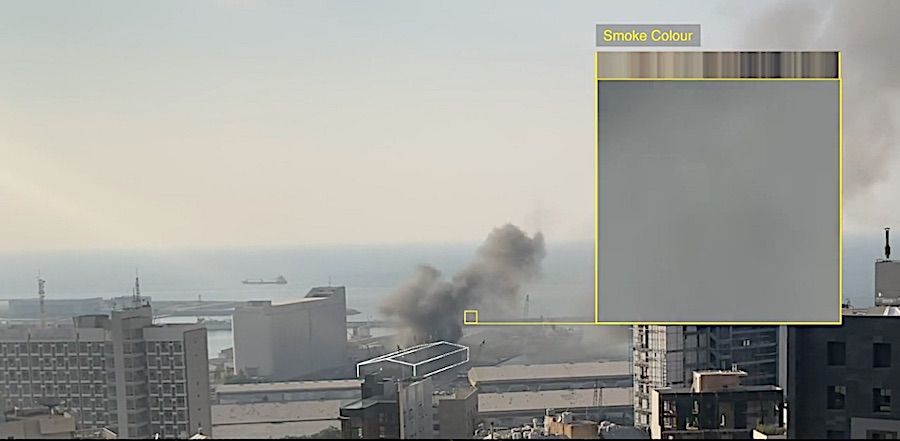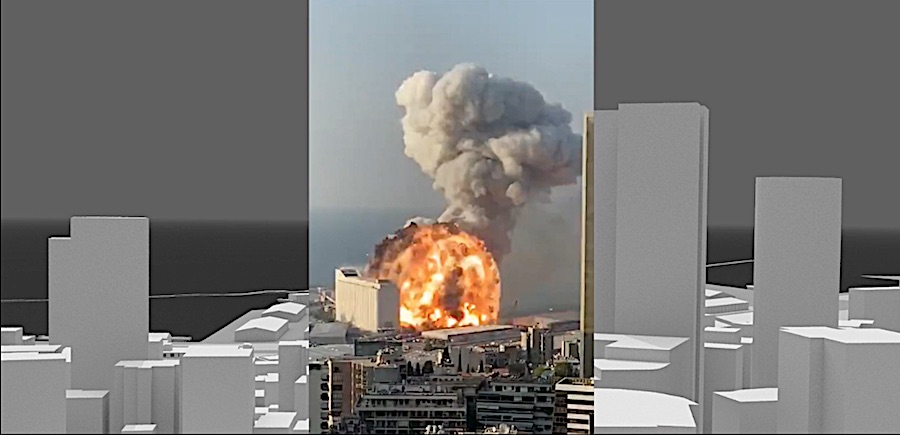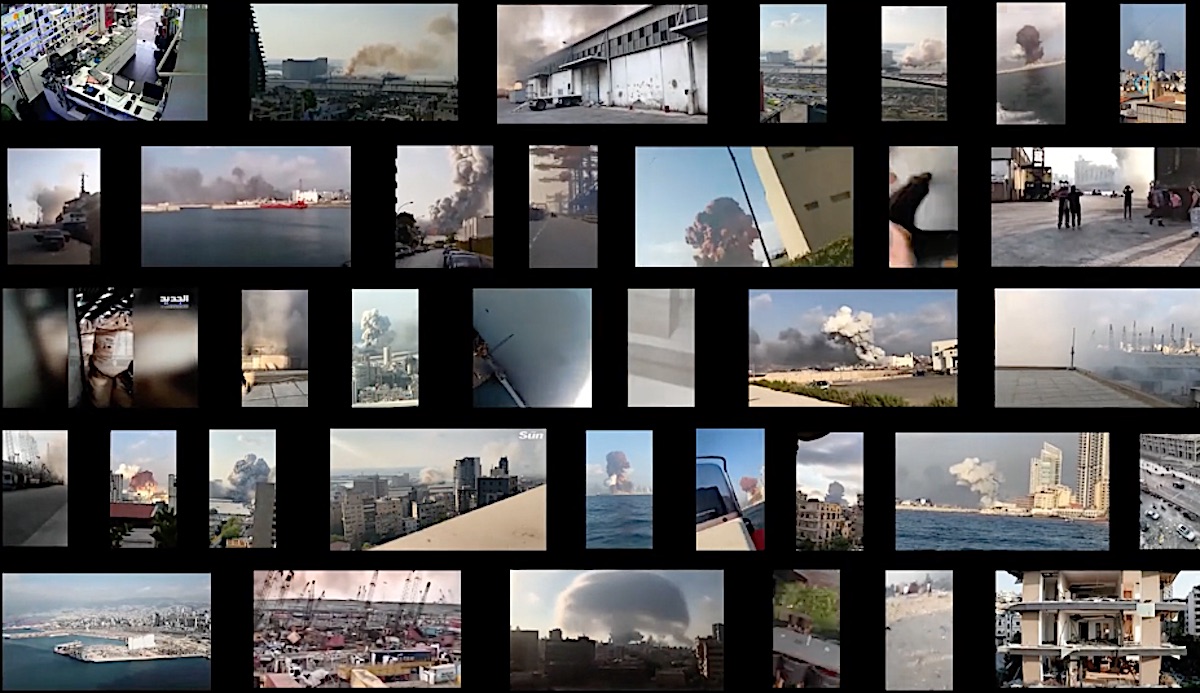Mada Masr invited the art collective Forensic Architecture to examine open-source information, including videos, photographs, and documents to provide a timeline and a precise 3D model to help investigate the events of the Beirut Port Explosions.
No one has been held accountable for one of the largest non-nuclear explosions in history – FA
Over three months after a massive explosion ripped through the port of Beirut, devastating the capital, no one has been held accountable for one of the largest non-nuclear explosions in history.
The August 4 blast killed over 200 people, wounded over 6,500 and destroyed large swathes of the city. The scale of the devastation was caused by the detonation of a massive amount of ammonium nitrate that had been stored for years in the port.

In October 2014, some 2,750 tons of ammonium nitrate was unloaded by court order to Warehouse 12 from the Rhosus, a vessel bound for Mozambique that had been impounded in the port by Lebanese authorities. As early as December 2014, multiple port and customs officials began warning of the dangers posed by the highly explosive material nitrate yet their warnings went ignored until it finally detonated on August 4.
An investigation by Lebanese authorities has yet to produce any results and many are sceptical it will hold any top-level officials responsible. Similarly, none of the findings from other probes conducted by France, the US and other countries has been released. Around 1,000 survivors and victims’ family members are now calling for an independent investigation into the blast.
Mada Masr invited Forensic Architecture, a research agency based at Goldsmiths, University of London, to examine open-source information, including videos, photographs, and documents to help investigate the explosion. Through spatial and architectural analysis, they have created a 3D model and timeline that provide an elaborate reconstruction of the events of August 4.
The model includes the most detailed layout of the interior of the warehouse to date, as well as an in-depth look at the spread of the fire that led to the deadly blast.

Forensic Architecture (FA) undertakes advanced spatial and media investigations into cases of human rights violations, with and on behalf of communities affected by political violence, human rights organisations, international prosecutors, environmental justice groups, and media organisations.
FA investigates state and corporate violence, human rights violations and environmental destruction all over the world. Our work often involves open-source investigation, the construction of digital and physical models, 3D animations, virtual reality environments and cartographic platforms. Within these environments, they locate and analyse photographs, videos, audio files and testimonies to reconstruct and analyse violent events. They also use our digital models as tools for interviewing survivors of violence, finding new ways to access and explore memories of trauma. The FA team also investigates human rights violations around the world.
As the search for accountability continues, Forensic Architecture and Mada Masr have created a model, the geolocated videos, and the source material publicly available via this link.

